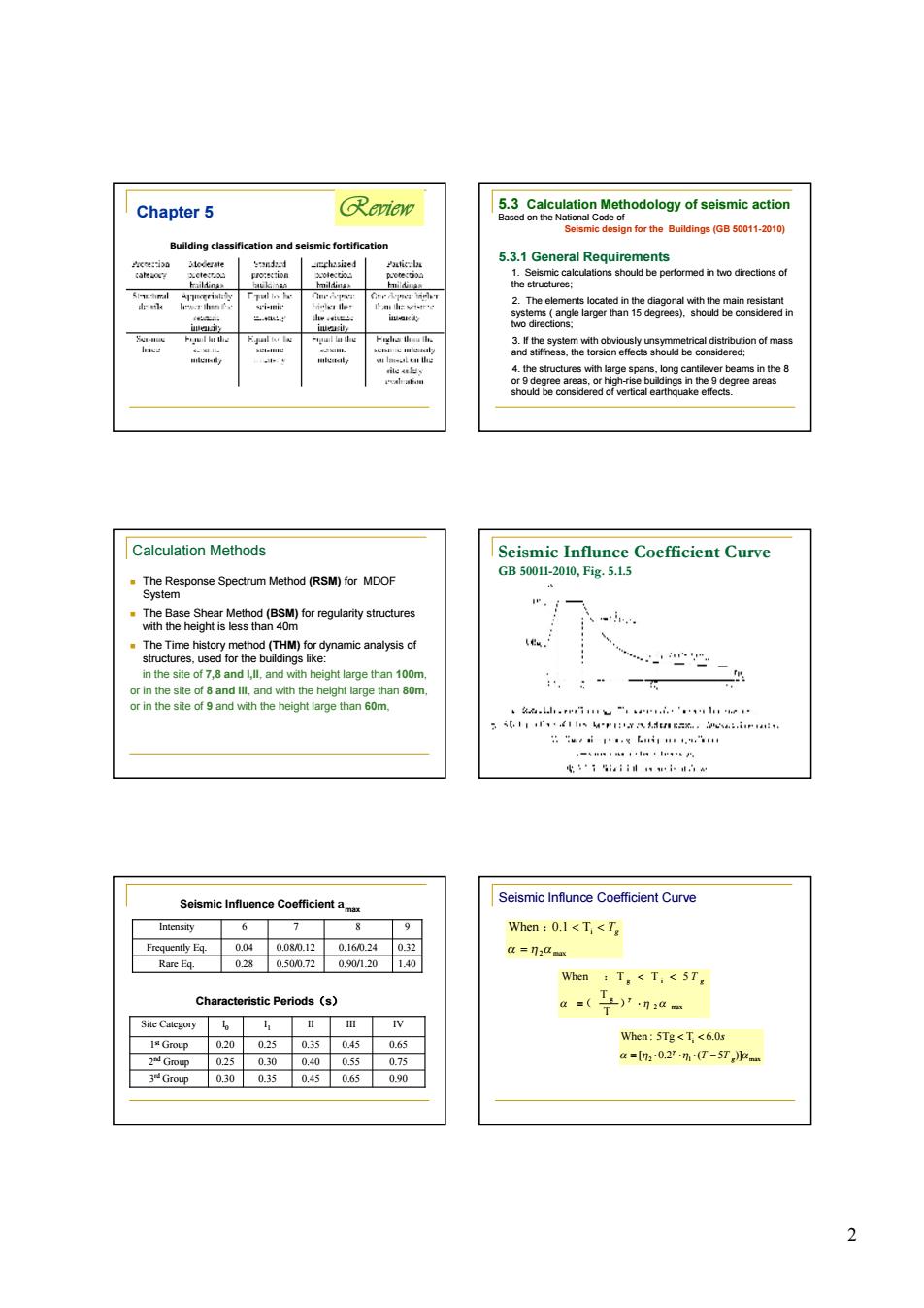正在加载图片...

Chapter 5 ng00 2.The woanmn Calculation Methods , Seismic Influnce Coefficient Curve When 0.1 <T,<T, When T,T.57, Characteristic Pariods (s)2 Chapter 5 Building classification and seismic fortification Review 5.3 Calculation Methodology of seismic action Based on the National Code of Seismic design for the Buildings (GB 50011-2010) 5.3.1 General Requirements 1. Seismic calculations should be performed in two directions of the structures; 2. The elements located in the diagonal with the main resistant systems ( angle larger than 15 degrees), should be considered in two directions; 3. If the system with obviously unsymmetrical distribution of mass and stiffness, the torsion effects should be considered; 4. the structures with large spans, long cantilever beams in the 8 or 9 degree areas, or high-rise buildings in the 9 degree areas should be considered of vertical earthquake effects. Calculation Methods n The Response Spectrum Method (RSM) for MDOF System n The Base Shear Method (BSM) for regularity structures with the height is less than 40m n The Time history method (THM) for dynamic analysis of structures, used for the buildings like: in the site of 7,8 and I,II, and with height large than 100m, or in the site of 8 and III, and with the height large than 80m, or in the site of 9 and with the height large than 60m, Seismic Influnce Coefficient Curve GB 50011-2010, Fig. 5.1.5 Seismic Influence Coefficient amax Rare Eq. 0.28 0.50/0.72 0.90/1.20 1.40 Frequently Eq. 0.04 0.08/0.12 0.16/0.24 0.32 Intensity 6 7 8 9 Characteristic Periods(s) 3 0.35 0.45 0.65 0.90 rd Group 2 0.30 0.40 0.55 0.75 nd Group 1 0.25 0.35 0.45 0.65 st Group Site Category I 0 I 1 II III IV 0.20 0.25 0.30 Seismic Influnce Coefficient Curve 2 max g g i T T When T T 5 a h a g = × < < ( ) : T g 2 1 max i [ 0.2 ( 5 )] When : 5Tg T 6.0 a h h a g T T g s = × × × - < < 2 max 0 Ti When .1 a = h a : < < Tg